Bootleg recording
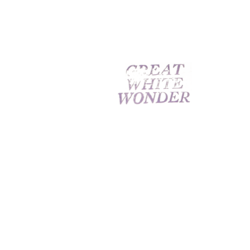
A bootleg recording is an audio or video recording of a performance not officially released by the artist or under other legal authority. Making and distributing such recordings is known as bootlegging. Recordings may be copied and traded among fans without financial exchange, but some bootleggers have sold recordings for profit, sometimes by adding professional-quality sound engineering and packaging to the raw material. Bootlegs usually consist of unreleased studio recordings, live performances or interviews without the quality control of official releases.
Bootlegs reached new popularity with
Changing technologies have affected the recording, distribution, and profitability of the bootlegging industry. The copyrights for the music and the right to authorise recordings often reside with the artist, according to several international
Definitions
The word bootleg originates from the practice of smuggling illicit items in the legs of tall boots, particularly the smuggling of alcohol during the American Prohibition era. The word, over time, has come to refer to any illegal or illicit product. This term has become an umbrella term for illicit, unofficial, or unlicensed recordings, including vinyl LPs, silver CDs, or any other commercially sold media or material.[1] The alternate term ROIO (an acronym meaning "Recording of Indeterminate/Independent Origin") or VOIO (Video...) arose among Pink Floyd collectors, to clarify that the recording source and copyright status were hard to determine.[2]
Although unofficial and unlicensed recordings had existed before the 1960s, the very first rock bootlegs came in plain sleeves with the titles
Bootlegs should not be confused with counterfeit or unlicensed recordings, which are merely unauthorised duplicates of officially released recordings, often attempting to resemble the official product as closely as possible. Some record companies have considered that any record issued outside of their control, and for which they do not receive payment, to be a counterfeit, which includes bootlegs. However, some bootleggers are keen to stress that the markets for bootleg and counterfeit recordings are different, and a typical consumer for a bootleg will have bought most or all of that artist's official releases anyway.[6]
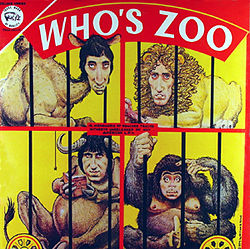
The most common type is the live bootleg, often an audience recording, which is created with sound recording equipment smuggled into a live concert. Many artists and live venues prohibit this form of recording, but from the 1970s onwards the increased availability of portable technology made such bootlegging easier, and the general quality of these recordings has improved over time as consumer equipment becomes sophisticated. A number of bootlegs originated with FM radio broadcasts of live or previously recorded live performances.[7] Other bootlegs may be soundboard recordings taken directly from a multi-track mixing console used to feed the public address system at a live performance. Artists may record their own shows for private review, but engineers may surreptitiously take a copy of this,[a] which ends up being shared. As a soundboard recording is intended to supplement the natural acoustics of a gig, a bootleg may have an inappropriate mix of instruments, unless the gig is so large that everything needs to be amplified and sent to the desk.[9]
Some bootlegs consist of private or professional studio recordings distributed without the artist's involvement, including
History
Pre-1960s
According to the enthusiast and author Clinton Heylin, the concept of a bootleg record can be traced back to the days of William Shakespeare, when unofficial transcripts of his plays would be published.[12] At that time, society was not particularly interested in who had authored a work. The "cult of authorship" was established in the 19th century, resulting in the first Berne Convention in 1886 to cover copyright. The US did not agree to the original terms, resulting in many "piratical reprints" of sheet music being published there by the end of the century.[13]
1960s
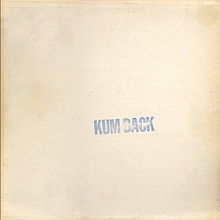
The first popular rock music bootleg resulted from
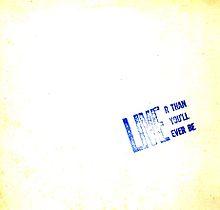
When the Rolling Stones announced their
1970s
During the 1970s the bootleg industry in the United States expanded rapidly, coinciding with the era of stadium rock or

Some bootleggers noticed rock fans that had grown up with the music in the 1960s wanted rare or unreleased recordings of bands that had split up and looked unlikely to reform. For instance, the release of
In
Bootleg collectors in this era generally relied on Hot Wacks, an annual underground magazine listing known bootlegs and information about recent releases. It provided the true information on bootlegs with fictitious labels, and included details on artists and track listings, as well as the source and sound quality of the various recordings.[31][32]
Initially, knowledge of bootlegs and where to purchase them spread by word of mouth.
1980s
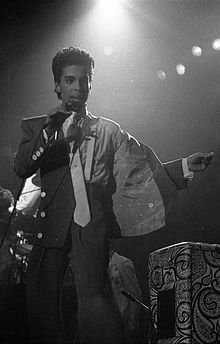
The 1980s saw the increased use of audio cassettes and
One of the most critically acclaimed bootlegs from the 1980s is
1990s–present
Following the success of Ultra Rare Trax, the 1990s saw an increased production of bootleg CDs, including reissues of shows that had been recorded decades previously. In particular, companies in Germany and Italy exploited the more relaxed copyright laws in those countries by pressing large numbers of CDs and including catalogs of other titles on the inlays, making it easier for fans to find and order shows direct.
By this time, access to the Internet was increasing, and bootleg review sites began to appear. The quality control of bootlegs began to be scrutinised, as a negative review of one could adversely harm sales.
The tightening of laws and increased enforcement by police on behalf of the British Phonographic Industry (BPI), Recording Industry Association of America (RIAA) and other industry groups—often for peripheral issues such as tax evasion—gradually drove the distributors of for-profit vinyl and CD bootlegs further underground.[35] Physical bootlegging largely shifted to countries with laxer copyright laws, with the results distributed through existing underground channels, open-market sites such as eBay, and other specialised websites. By the end of the decade, eBay had forbidden bootlegs.[47]
The late 1990s saw an increase in the free trading of digital bootlegs, sharply decreasing the demand for and profitability of physical bootlegs. The rise of
The video sharing website YouTube became a major carrier of bootleg recordings. YouTube's owner, Google, believes that under the "safe-harbor" provision of the Digital Millennium Copyright Act (DMCA), it cannot be held responsible for content, allowing bootleg media to be hosted on it without fear of a lawsuit. As the technology to host videos is open and available, shutting down YouTube may simply mean the content migrates elsewhere.[51] An audience recording of one of David Bowie's last concerts before he retired from touring in 2004 was uploaded to YouTube and received a positive review in Rolling Stone.[52] Bilal's unreleased second album, Love for Sale, leaked in 2006 and became one of the most infamously bootlegged recordings during the digital piracy era,[53] with its songs since remaining on YouTube.[54] Lana Del Rey's 2006 demo album Sirens leaked on YouTube in 2012.[55] In 2010, YouTube removed a 15-minute limit on videos, allowing entire concerts to be uploaded.[56]
Copyright
The
In the US, bootlegs had been a grey area in legality, but the 1976 Copyright Act extended copyright protection to all recordings, including "all misappropriated recordings, both counterfeit and pirate". This meant bootleggers would take a much greater risk, and several were arrested.[60] Bootlegs have been prohibited by federal law (17 USC 1101) since the introduction of the Uruguay Round Agreements Act (URAA, PL 103-465) in 1994, as well as by state law. The federal bootleg statute does not pre-empt state laws, which also apply both prior to and since the passage of the federal bootleg statute. The US v. Martignon case challenged the constitutionality of the federal bootleg statute, and in 2004, U.S. District Judge Harold Baer Jr. struck down the part banning the sale of bootleg recordings of live music, ruling that the law unfairly grants a seemingly perpetual copyright period to the original performances.[61][62] In 2007, Judge Baer's ruling was overruled, and the United States Court of Appeals for the Second Circuit found that the anti-bootlegging statute was within the power of Congress.[63]
Official releases

Record companies have described bootlegs as "grey area, live recordings", describing them as "semi-condoned".[64] Research into bootleg consumers found that they are committed fans of the artist; a study of Bruce Springsteen fans showed 80% felt some bootlegs were essential purchases despite owning every official release.[64] Springsteen has said he understands why fans buy bootlegs, but dislikes the market due to the lack of quality control and making profit over pleasing fans.[65] Frank Zappa hated bootlegs and wished to control his recordings, so he created the Beat the Boots! boxed sets, each containing LPs that were direct copies of existing bootlegs. He set up a hotline for fans to report bootlegs and was frustrated that the FBI were not interested in prosecuting. The first set included As An Am Zappa, in which he can be heard complaining about bootleggers releasing new material before he could.[66]
Throughout their career, the Grateful Dead were known to tolerate taping of the live shows. There was a demand from fans to hear the improvisations that resulted from each show, and taping appealed to the band's general community ethos.[67] They were unique among bands in that their live shows tended not to be pressed and packaged as LPs, but remained in tape form to be shared between tapers.[68] The group were strongly opposed to commercial bootlegging and policed stores that sold them, while the saturation of tapes among fans suppressed any demand for product.[69] In 1985, the Grateful Dead, after years of tolerance, officially endorsed live taping of their shows, and set up dedicated areas that they believed gave the best sound recording quality.[70] Other bands, including Pearl Jam, Phish and the Dave Matthews Band tolerate taping in a similar manner to the Grateful Dead, provided no profit is involved. Because of the questionable legality of bootlegs, fans have sometimes simply dubbed a bootleg onto tape and freely passed it onto others.[32]
Many recordings first distributed as bootleg albums were later released officially by the copyright holder. Provided the official release matches the quality of the bootleg, demand for the latter can be suppressed. One of the first rock bootlegs, containing John Lennon's performance with the Plastic Ono Band at the 1969 Toronto Rock and Roll Revival, was released officially as Live Peace in Toronto 1969 by the end of the year, effectively ending sales of the bootleg.[71] The release of Bob Dylan's 1966 Royal Albert Hall concert on Vol. 4 of his Bootleg Series in 1998 included both the acoustic and electric sets, more than any bootleg had done.[72]
In 2002, Dave Matthews Band released Busted Stuff in response to the Internet-fuelled success of
According to a 2012 report in Rolling Stone, many artists have now concluded that the volume of bootlegged performances on YouTube in particular is so large that it is counterproductive to enforce it, and they should use it as a marketing tool instead. Music lawyer Josh Grier said that most artists had "kind of conceded to it".[56] Justin Bieber has embraced the distribution of video clips via Twitter to increase his fanbase.[56]
Australian psychedelic rock band
See also
- Cam, a bootleg recording of a film in a movie theatre
- Magnitizdat, for live recordings of banned bards and musicians in the Soviet Union
References
Notes
- ^ A bootleg of Bruce Springsteen was distributed after the band's sound engineer left a cassette in his car while it was being repaired. A bootlegger copied the cassette during the work, then returned it without arousing suspicion.[8]
Citations
- ^ Heylin 1994, p. 6.
- ISBN 978-0-679-76385-7.
- ^ a b Heylin 1994, p. 45.
- ^ Heylin 1994, p. 92.
- ^ Heylin 2010, p. 483.
- ^ Heylin 1994, p. 7.
- ISBN 978-1-4402-2748-6.
- ^ Heylin 2010, p. 278.
- ^ Heylin 2010, p. 256.
- ^ Heylin 1994, p. 44.
- ^ Heylin 1994, p. 196.
- ^ Heylin 1994, p. 17.
- ^ Heylin 1994, pp. 20–21.
- ^ Heylin 1994, p. 37.
- ^ Heylin 1994, p. 31.
- ^ Heylin 1994, p. 32.
- ^ Heylin 1994, p. 394.
- ^ Heylin 1994, p. 60.
- ^ Heylin 1994, p. 61.
- ^ Heylin 1994, p. 65.
- ^ Heylin 1994, p. 66.
- ^ Cummings 2013, p. 102.
- ^ Cummings 2013, p. 117.
- ^ Heylin 1994, pp. 69–70.
- ^ Heylin 1994, pp. 116–117.
- ^ Heylin 1994, p. 98.
- ^ Heylin 1994, pp. 73–74, 76.
- ^ Heylin 1994, p. 63.
- ^ Slugbelch. "A Brief History Of Bootlegs". The Pink Floyd Vinyl Bootleg Guide. Backtrax Records. Archived from the original on 3 February 2007. Retrieved 23 September 2009.
- ^ Heylin 1994, p. 188.
- ^ Heylin 1994, p. 130–131.
- ^ a b Shuker 2013, p. 105.
- ^ Cummings 2013, p. 174.
- ^ Cummings 2013, p. 103.
- ^ a b c d Galloway, Simon (1999). "Bootlegs, an insight into the shady side of music collecting". More Music e-zine. Archived from the original on 10 July 2015. Retrieved 23 September 2006.
- ^ Heylin 1994, p. 170.
- ^ Cummings 2013, p. 79.
- ^ Heylin 1994, pp. 123–4.
- ^ Heylin 2010, p. 428.
- ISBN 978-0-313-34046-8.
- ^ Cummings 2013, p. 163.
- ^ Heylin 1994, pp. 282–3.
- ^ Heylin 2010, p. 369.
- ^ Heylin 2010, p. 279.
- ^ Heylin 2010, p. 458.
- ^ Heylin 2010, p. 462.
- ^ "half.com, buy.com Team on Latest Used Goods Sites". Billboard. 18 November 2000. p. 115. Retrieved 20 December 2015.
- ^ Heylin 2010, p. 476.
- ^ Jordan, Keith. "T'Internet – A Bootleg Fan's Paradise Archived 16 January 2007 at the Wayback Machine" – The Past, Present and Future of Bootlegs considering the internet. NPF Magazine. November 2006.
- ^ Heylin 2010, pp. 478–9.
- ^ Hilderbrand 2009, p. 242.
- ^ Greene, Andy (4 December 2015). "Bootleg of the Week: David Bowie Live in Atlantic City 5/29/04". Rolling Stone. Retrieved 21 December 2015.
- ^ Larrier, Travis (4 March 2013). "Bilal Is the Future (And the Present ... And the Past)". The Shadow League. Retrieved 20 July 2020.
- ^ Hull, Tom (31 August 2020). "Music Week". Tom Hull – on the Web. Retrieved 2 September 2020.
- ^ "Lana Del Rey's first album 'Sirens' leaks – The Strut". Retrieved 11 August 2022.
- ^ a b c Knopper, Steve (17 December 2012). "Top Artists Adjust to New World of YouTube Bootlegs". Rolling Stone. Retrieved 23 December 2015.
- ^ "Berne Convention for the Protection of Literary and Artistic Works, Article 9". World Intellectual Property Organisation. September 1886. Archived from the original on 11 September 2012. Retrieved 23 September 2006.
- ^ "Berne Convention for the Protection of Literary and Artistic Works". Cornell University Law School. Retrieved 20 December 2015.
- ^ Heylin 2010, p. 289.
- ^ Heylin 1994, p. 125.
- ^ Landau, Michael (April 2005). "Constitutional Impediments to Protecting the Live Musical Performance Right in the United States". IPRinfo Magazine. IPR University Center. Retrieved 16 October 2017.[permanent dead link]
- ^ McClam, Erin (September 2004). "N.Y. judge strikes down anti-bootleg law". USA Today. Associated Press. Retrieved 23 September 2006.
- ^ US v. Martignon, 492 F. 3d 140 (2d Cir. 2007).
- ^ a b Shuker 2013, p. 106.
- ^ Heylin 1994, p. 136.
- ^ Heylin 1994, pp. 195, 395.
- ^ Cummings 2013, p. 156.
- ^ Cummings 2013, p. 157.
- ^ Heylin 1994, p. 397.
- ^ Cummings 2013, p. 158.
- ^ Heylin 1994.
- ^ "The Bootleg Series, Vol. 4". AllMusic. Retrieved 19 December 2015.
- ^ "Queen take on the Bootleggers with downloads of their own". EConsultancy. 11 November 2004. Retrieved 19 December 2015.
- ^ Bambarger (1998, p. 86): Bambarger, Bradley (11 July 1998). "Fripp label does it his way: Guitarist follows own muse in business, too". Billboard. Vol. 110, no. 28. pp. 13 and 86.
- ^ Anonymous, Belfast Telegraph (18 August 2009). "Jam and the joys of music distribution in today's world". Belfast Telegraph. Independent News and Media PLC. Archived from the original on 23 May 2013. Retrieved 14 April 2012.
- ^ "The Encore Series". themusic.com. Retrieved 21 December 2015.
- ^ Greene, Andy (17 January 2014). "Bruce Springsteen Formalizes Plans for Instant Live Bootlegs". Rolling Stone. Retrieved 21 December 2015.
- ^ "Bootlegger". King Gizzard and the Lizard Wizard. Retrieved 1 August 2022.
Bibliography
- Cummings, Alex Sayf (2013). Democracy of Sound: Music Piracy and the Remaking of American Copyright in the Twentieth Century. Oxford University Press. ISBN 978-0-19-932372-2.
- Heylin, Clinton (1994). The Great White Wonders – A History of Rock Bootlegs. ISBN 0-670-85777-7.
- Heylin, Clinton (2010). Bootleg! The Rise And Fall Of The Secret Recording Industry. Omnibus Press. ISBN 978-0-85712-217-9.
- Hilderbrand, Lucas (2009). Inherent Vice: Bootleg Histories of Videotape and Copyright. Duke University Press. ISBN 978-0-8223-9219-4.
- Shuker, Roy (2013). Wax Trash and Vinyl Treasures: Record Collecting as a Social Practice. Ashgate Publishing. ISBN 978-1-4094-9397-6.
Further reading
- Thompson, Dave. A Music Lover's Guide to Record Collecting. Backbeat Books, September 2002. (ISBN 0-87930-713-7)
- Trew, Stuart. "The Double Life of a Bootlegger", Warrior Magazine, Sept. 2004, p. 6–8. N.B.: Discusses bootlegging in the Canadian context.
